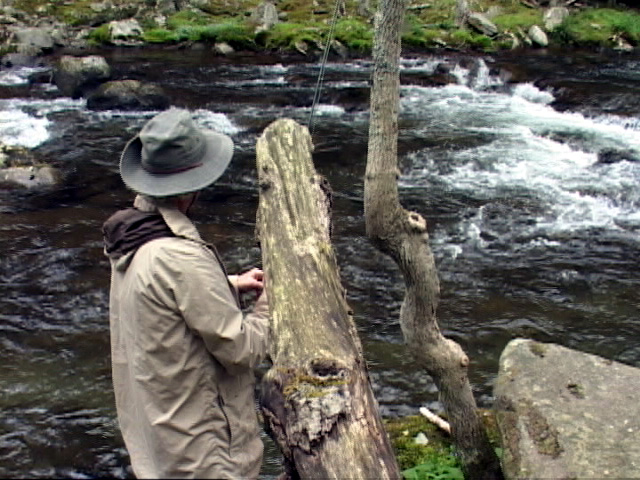
prefer breathable clothing. This
one is made of Gore-Tex material
that is waterproof and comfortable.
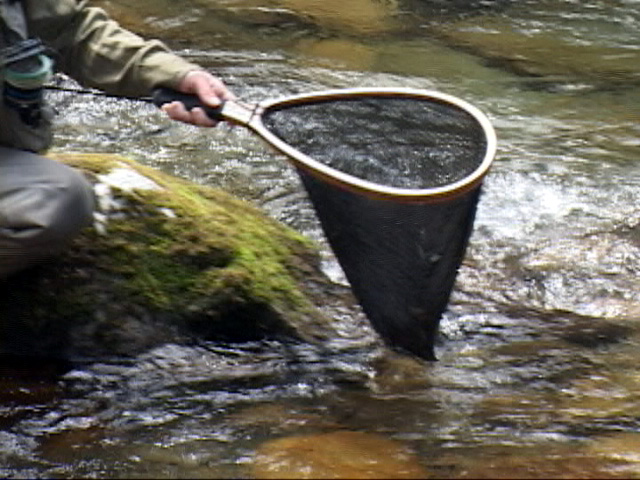
landing net. They come in handy
when you have a big fish on for
sure.
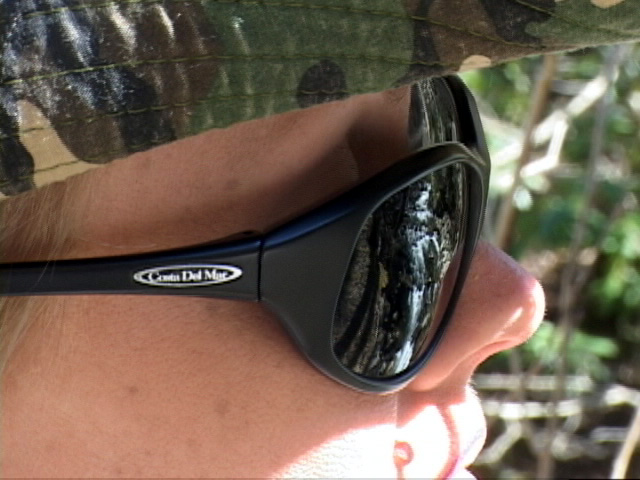
Don’t leave home without them.
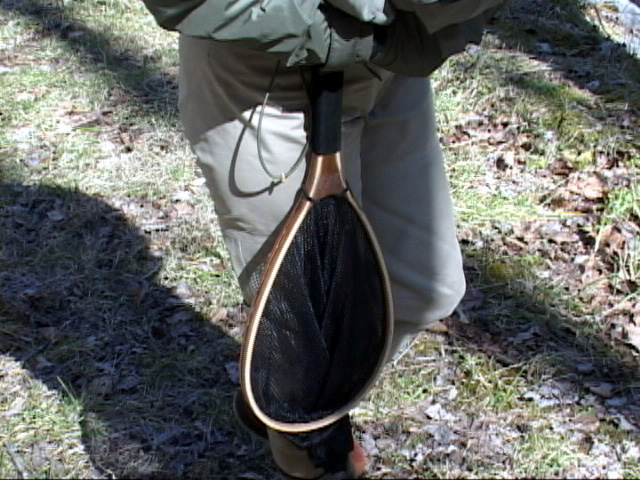
attaching a net to your belt, vest,
etc. They are helpful.
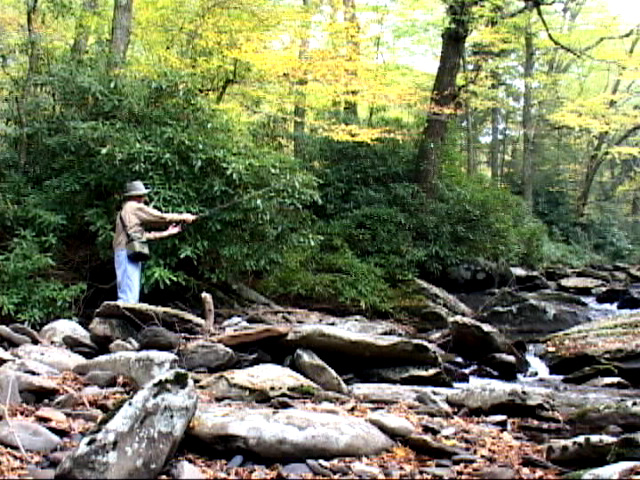
your vehicle very far, it pays to carry
some type of small pack with you
for snacks and water or drinks.
The following is a list of some more things that we hope will help you arrive at Great Smoky Mountains National Park with everything you need to fly fish these beautiful, freestone mountain streams. If you are new to fly fishing, you may want to read this section of our website on Gear before proceeding with this.
Fly Fishing Vest or Packs:
Fly fishing vest are necessary to be in style (just kidding). They do come in handy for storing all your accessories and fly boxes. Most shirts that are made for the outdoors have enough pockets for everything but a fly vest is nice to have. They make open, lightweight ones for warm weather and others for colder weather. There are all types of front and rear (chest and waist) packs for fly fishing that you may also want to consider.
Fly Boxes/Storage:
Fly boxes come in handy and are necessary to keep the flies dry, secure, organized and untangled. There are many different styles and types. I prefer the smaller ones with interchangeable liners so that I can change flies without necessarily changing fly boxes.
Fly Fishing Accessories:
Fly Floatant:
There are several different types and makes of fly floatants that help your flies stay on top of the water without sinking. There are dry powder types and wet/gell types. Both work okay. I prefer the dry powder type. Some anglers use both.
Line Clippers:
I use finger nail clippers. They make several types of clippers specifically for cutting line. Just be sure you have a way to cut your leader and tippet. Don’t ruin your teeth.
Pliers for crimping lead, etc:
You do need some type of small pliers for crimping things as well as for many other things that may come about.
Camera:
I suggest carrying a small waterproof, or at least a water-resistant, digital camera along. You may want to record images of the beautiful scenes you will most likely discover; the wildlife you see; and fish you catch.
Sunglasses:
Polarized sunglasses are one of the most important things you should have with you. They help you see what is under the water as well as the fish. Different shades of color works best for different lighting conditions but for an all around color, I prefer amber. Lenses, especially glass, are subject to breaking when hit by a heavy fly on your backcast. Of course, by the same token, those that don’t break or shatter may also help protect your eyes from them. This is something you may want to consider.
Weights:
You should have an assortment of lead weight for nymph fishing. You need BB size weights down to very tiny sizes.
Strike Indicators:
Strike indicators are used by many anglers. There are many types of them.
Lanyard:
Lanyards come in handy for keeping the stuff you need to get to fast and easy hanging from around your neck.
Fly Fishing Clothing:
Hat:
Hats or caps with a bill of some type helps you see better in many cases by shading the glare of the sun. Of course they also help keep you head dry and warm. I am listing them for checklist purposes.
Shirts:
Any shirt is okay as long as it is green. Seriously, you do need to wear a shirt (or other outer clothing) in a subdued color that best matches your surroundings. In the Smokies that is usually a shade of green. Avoid wearing bright colors. The fish will spot you much easier.
Pants:
Same as with the shirt, avoid bright flashy colors. Shades of green work best.
Jackets/Coats/Raingear:
Jackets and coats that breath are the best types. I prefer Gore-Tex material but the choice is strictly yours. Just make certain you have the proper weight of jacket for the weather. Remember, the water is much colder than the warm water streams you may be used to.
Insulated Underwear:
If you wade in cold water you don’t want to forget the insulated underwear. It was also mentioned in the wading section. Of course if you are fishing in the winter, you will need it wading or not.
Landing Nets:
You don’t have to have a landing net. They can help you prevent loosing fish. I usually don’t use one but there have been times I regretted not having one. I have lost fish that I could have landed using a net. I also don’t like carrying them around. I snag them on everything possible. The choice is up to you.
Copyright 2011 James Marsh
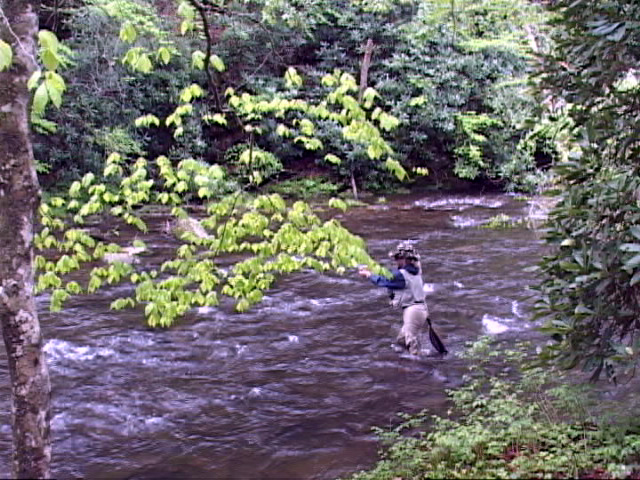
middle of the stream, you don’t
want to have to go back to the
bank or vehicle for things you may
need. Fly vest let you carry what
you need with you .
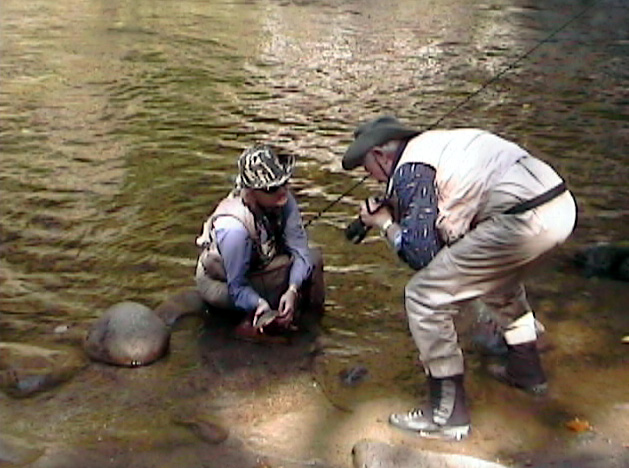
nice accessory to have along with
you. This is an expensive
professional model with a dummy
operator.
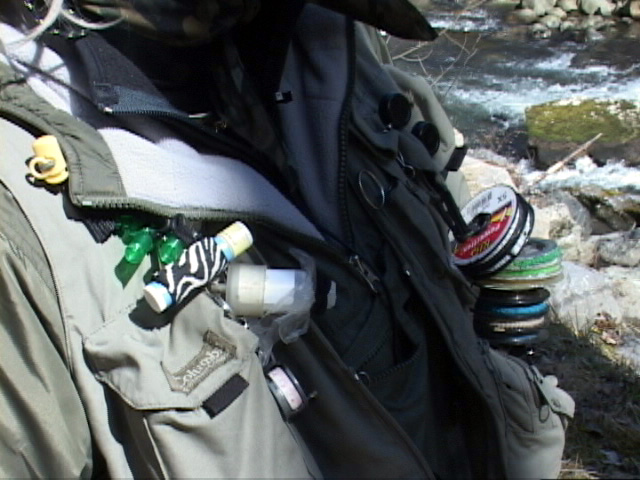
shake or floatant attached to your
vest can be a neat way to get to it
fast.
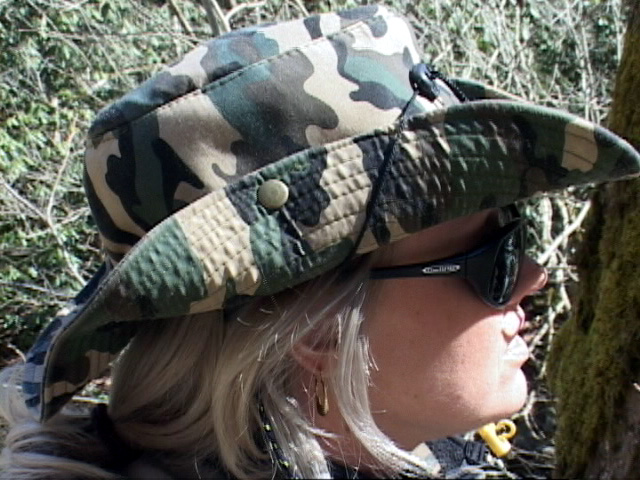
your eyes. You want it to blend in
with the background as much as
possible
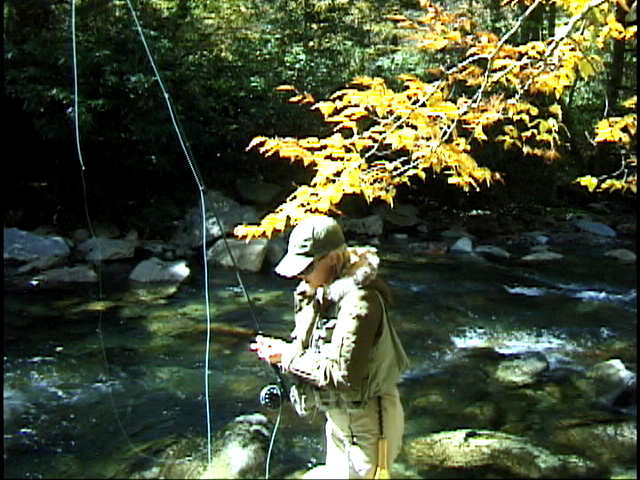
tip of the water where you can see
it well in some cases. Angie
applies floatant evey few cast.
